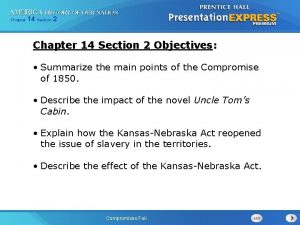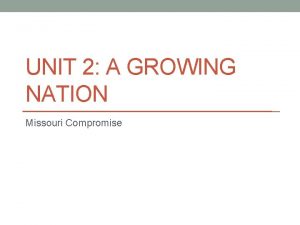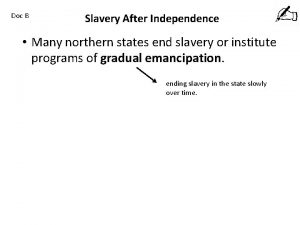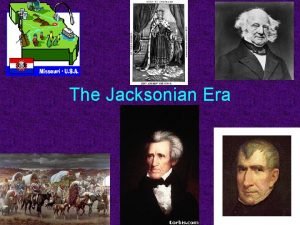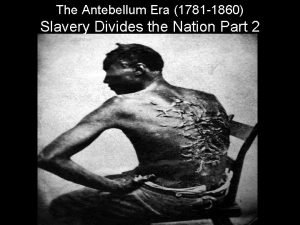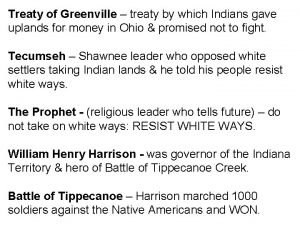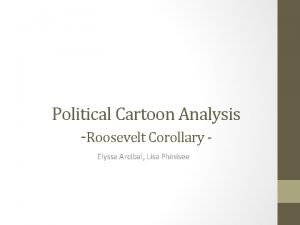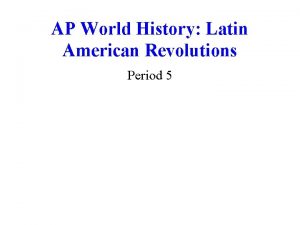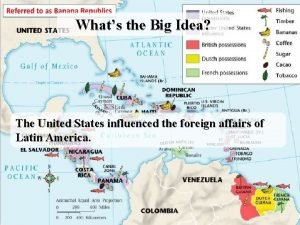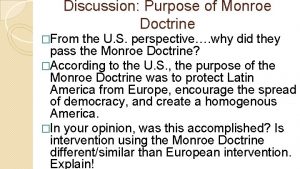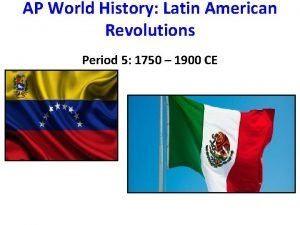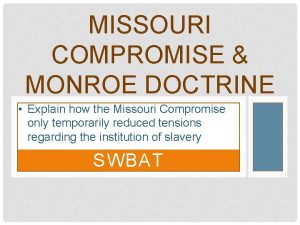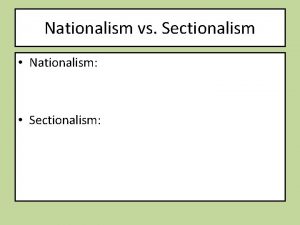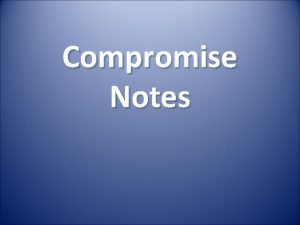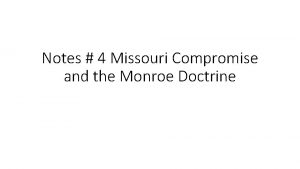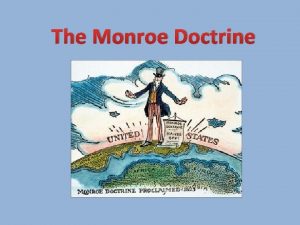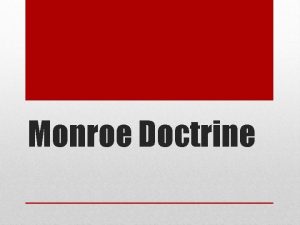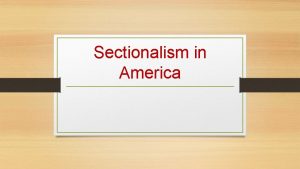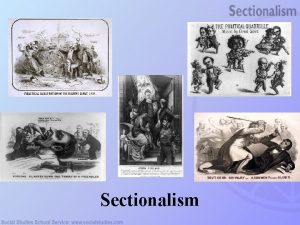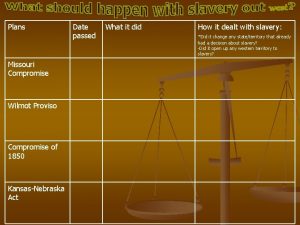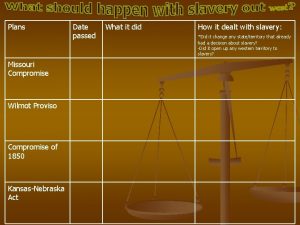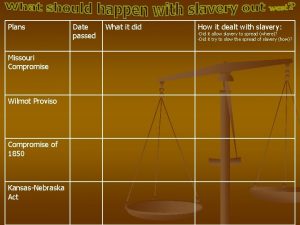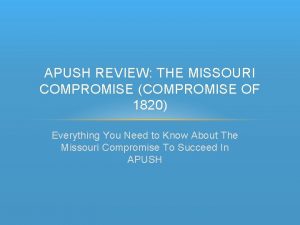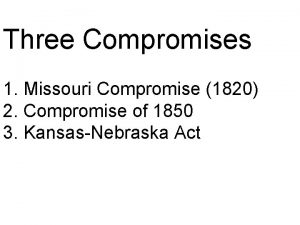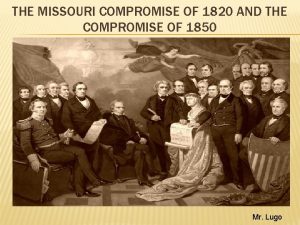Monroe Doctrine Missouri Compromise Sectionalism Pres Monroe worried




















- Slides: 20

Monroe Doctrine & Missouri Compromise & Sectionalism

• Pres. Monroe worried that after Mexico broke free from Spain the European powers might try to take control of newly independent Latin American Countries. • Russia was also interested in the northwest coast of North America

• Secretary of State J. Q. Adams and Pres. Monroe put together a document to protect the interest of America. • That became the Monroe Doctrine

Monroe Doctrine • Exclusive statement of American policy warning European powers NOT to interfere with the Americas

• Monroe Doctrine was an exclusive statement of American policy warning European powers not to interfere with the Americas. • There are four points to this doctrine

Points • 1. The United States would NOT interfere in the affairs of European nations. • 2. The United states would recognize, and not interfere with, colonies that already existed in North and South America.

Points • 3. The Western Hemisphere was to be off -limits to future colonization by any foreign power. • 4. The United States government would consider any European power’s attempt to colonize or interfere with nations in the Western Hemisphere to be a hostile act.

• No European powers challenged this doctrine. • It was a clear warning for European powers to stay out if the Americas. • It is still a guiding force for American Foreign policy today.

MISSOURI COMPROMISE

• The Problem • Missouri Territory asked Congress for admission as a state. • Most settler here came from Tennessee and Kentucky which allowed for slavery. • They felt that Missouri should have slavery • Rep. James Tallmadge proposed that Missouri should be allowed in, but should gradually abolish slavery • The house approved it but the Senate blocked it.

• Population of North states slightly larger than the South • North=105 in house compared to South=81 • Senate is Balanced 11 each • If Missouri came in as free it would put • South in the Minority in both Houses • Debate heated to a boiling point

The Fear • Fearing a split in the Union Henry Clay proposed: • Maine be brought in as a free state and Missouri enter as a slave state

Compromise addressed: • Question of slavery in the rest of Louisiana Purchase territory. • Drew line west from the southern boundary of Missouri at 30 degrees 30 minutes N Latitude. • Compromise blocked slavery north of the line but permitted it south of the line

• It was also a temporary solution to sectional conflict. • Did nothing to solve the basic problem • Americans moving west could take their ways of life with them • Southerner wanted to take slavery with them • Northerners believed in labor by a free people • Could be a disagreement without a resolution • Just a bandaid effect

SECTIONALISM

• Differences in the goals and interests of different parts of the country. • Three distinct regions • North • South • West • Geography, Economics and History all contributed to the differences within each section of the country

North • Included New England the Mid Atlantic States • Daniel Webster spokesman protected interest

South • Southeast part of country • John C. Calhoun spokesman for south

West • Area between the Appalachian Mtns. and Mississippi River • Henry Clay spokesman for the West

Concern • Will Sectionalism divide the country? • Each spokesman was concerned with protecting the interests of their section of the country
 What undid the missouri compromise
What undid the missouri compromise Manifest destiny was used to justify an american desire to
Manifest destiny was used to justify an american desire to Missouri compromise
Missouri compromise Missouri compromise
Missouri compromise Slave states
Slave states Missouri compromise
Missouri compromise Missouri compromise
Missouri compromise The adams onis treaty what ideas did the measure contain
The adams onis treaty what ideas did the measure contain Missouri compromise
Missouri compromise Jeopardy monroe doctrine
Jeopardy monroe doctrine Monroe doctrine
Monroe doctrine Monroe doctrine and manifest destiny
Monroe doctrine and manifest destiny Which of these best summarizes the monroe doctrine?
Which of these best summarizes the monroe doctrine? Who is this guy
Who is this guy Roosevelt corollary
Roosevelt corollary Latin american revolution definition ap world history
Latin american revolution definition ap world history Monroe doctrine
Monroe doctrine Whats the monroe doctrine
Whats the monroe doctrine New imperialism definition ap world history
New imperialism definition ap world history Monroe doctrine
Monroe doctrine Latin american revolutions definition ap world history
Latin american revolutions definition ap world history
